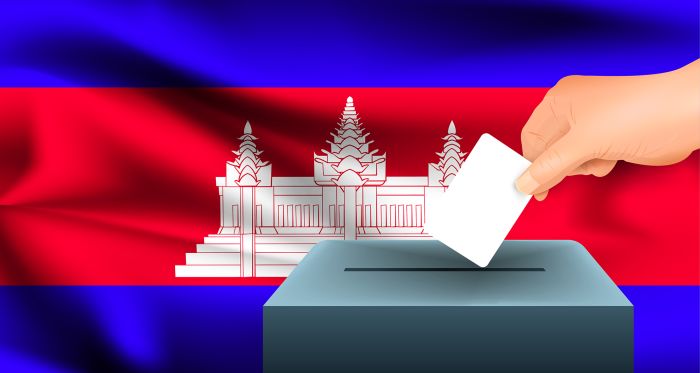Cambodia’s Economic Diplomacy in 2025: Who’s Winning?

As Southeast Asia’s economies continue to reposition themselves amid changing global dynamics, Cambodia has emerged as a strategic focal point for diplomatic and trade relations in the region. In 2025, the country’s economic diplomacy is defined by a balancing act—between China’s increasing presence, growing Western skepticism, ASEAN integration, and emerging partnerships across Asia and the Middle East.
The question on many investors’ and policymakers’ minds is: Who’s really benefiting from Cambodia’s economic diplomacy in 2025? Is Cambodia leading its narrative, or is it leaning too heavily on traditional allies? This blog explores the strategies, players, and power shifts defining Cambodia’s diplomatic economy this year.
1. Cambodia’s Diplomatic Playbook: Navigating Global Realignment
Cambodia’s foreign policy under Prime Minister Hun Manet has adopted a more pragmatic, multipolar approach, focusing on balancing traditional partners like China with the broader ASEAN bloc and new outreach to the West, Japan, South Korea, and the Middle East.
Key Economic Diplomatic Strategies:
-
Bilateral Infrastructure Diplomacy: Continuing long-term infrastructure deals—especially those with China under the Belt and Road Initiative (BRI).
-
ASEAN Regionalism: Active participation in ASEAN 2025 Agenda and the Regional Comprehensive Economic Partnership (RCEP) to expand trade.
-
Digital and Innovation Diplomacy: Seeking technological partnerships with South Korea and Singapore.
-
Tariff Rebalancing Talks with the U.S. amid concerns over human rights and trade imbalances.
🡺 Cambodia’s economic diplomacy has evolved from dependency to strategic hedging, allowing it to diversify while still reaping the benefits of global partnerships.
2. China: Still Cambodia’s Largest Diplomatic and Economic Backer
No country has had more influence over Cambodia’s economic infrastructure than China. In 2025, Chinese investment accounts for over 40% of foreign direct investment (FDI) in the country, and this number is still growing.
Major Developments in 2025:
-
BYD Electric Vehicle Factory in Sihanoukville Special Economic Zone (SSEZ): A $200M investment with an expected 10,000 vehicles produced annually.
👉 Source: Reuters -
New logistics and shipping routes linking Sihanoukville Port with China’s southern provinces.
-
Deepening military and diplomatic ties through naval base expansions at Ream, although denied by Phnom Penh to be exclusively for China.
👉 Source: AP News
China’s dominance has raised concerns over overreliance, but Cambodian policymakers insist that the relationship is economically symbiotic and provides development opportunities not available from the West.
3. The U.S. and EU: Re-engagement Through Strategic Diplomacy
Amid rising geopolitical tension and trade conflicts with China, the U.S. is revisiting its relationship with Cambodia. The new U.S. trade strategy includes pressuring Cambodia and Vietnam to reduce export subsidies.
Key Update:
In early 2025, the U.S. imposed steep new tariffs on Southeast Asian apparel and footwear products, many of which are manufactured in Cambodia.
Cambodia responded by pledging tariff cuts on 19 U.S. product categories in exchange for reopening trade discussions.
👉 Source: Wall Street Journal
Meanwhile, the EU continues to apply human rights-based scrutiny, keeping Cambodia out of the “Everything But Arms” (EBA) trade scheme since 2020.
Despite these pressures, Western companies continue to invest, especially in digital services, green energy, and startup ecosystems.
4. ASEAN & RCEP: Cambodia’s Commitment to Regional Integration
ASEAN remains the cornerstone of Cambodia’s regional diplomacy. With the ASEAN 2025 Agenda nearing its final phase, Cambodia is aligning its industrial and digital policies to meet regional standards.
Benefits of RCEP Membership:
-
Preferential access to Japan, China, South Korea, Australia, and New Zealand.
-
Encouraging Cambodia’s manufacturing shift from garments to electronics.
-
Better integration into regional value chains, reducing dependency on single-country partners.
👉 Learn more about ASEAN’s 2025 strategy.
RCEP and ASEAN membership give Cambodia geopolitical legitimacy, and signal that its long-term growth ambitions are not only tied to bilateral donors like China.
5. Middle East and South-South Partnerships: Cambodia’s Rising Influence
Cambodia is also exploring South-South Cooperation, enhancing trade and labor deals with countries in the Middle East and South Asia.
Notable developments:
-
Cambodian halal food processing companies exporting to Gulf countries.
-
New labor migration agreements with the UAE and Saudi Arabia.
-
Agricultural MoUs signed with Pakistan and Bangladesh for rice and cassava.
These relationships help reduce reliance on China and the West, while opening doors to high-demand export markets.
6. Who’s Winning?
Cambodia’s diplomatic wins are nuanced and layered. Here’s how the main players stack up in 2025:
| Player | Gains | Risks |
|---|---|---|
| China | Control over key infrastructure and increased FDI | Criticism over sovereignty, environmental impact |
| U.S. | Leverage through tariffs and trade talks | Loss of goodwill from businesses |
| ASEAN | Stronger integration and trade benefits | Coordination delays and policy harmonization |
| Cambodia | Infrastructure upgrades, global relevance, diversified diplomacy | Overexposure to donor influence, human rights scrutiny |
7. Conclusion: Cambodia’s Smart Diplomacy Is Paying Off
In 2025, Cambodia’s economic diplomacy is not about choosing sides—it’s about smart hedging, global visibility, and long-term planning. Cambodia is managing to secure infrastructure and investment from China, while slowly rebalancing its portfolio with ASEAN integration, Middle East ties, and U.S. negotiations.
For foreign investors, this means:
-
A strategically positioned economy in the middle of the world’s most dynamic region.
-
A government committed to international cooperation, digital growth, and logistics modernization.
-
An agent-driven business environment where local expertise is crucial.
If Cambodia can continue navigating these relationships without compromising its autonomy or stability, the biggest winner in its economic diplomacy may very well be Cambodia itself.